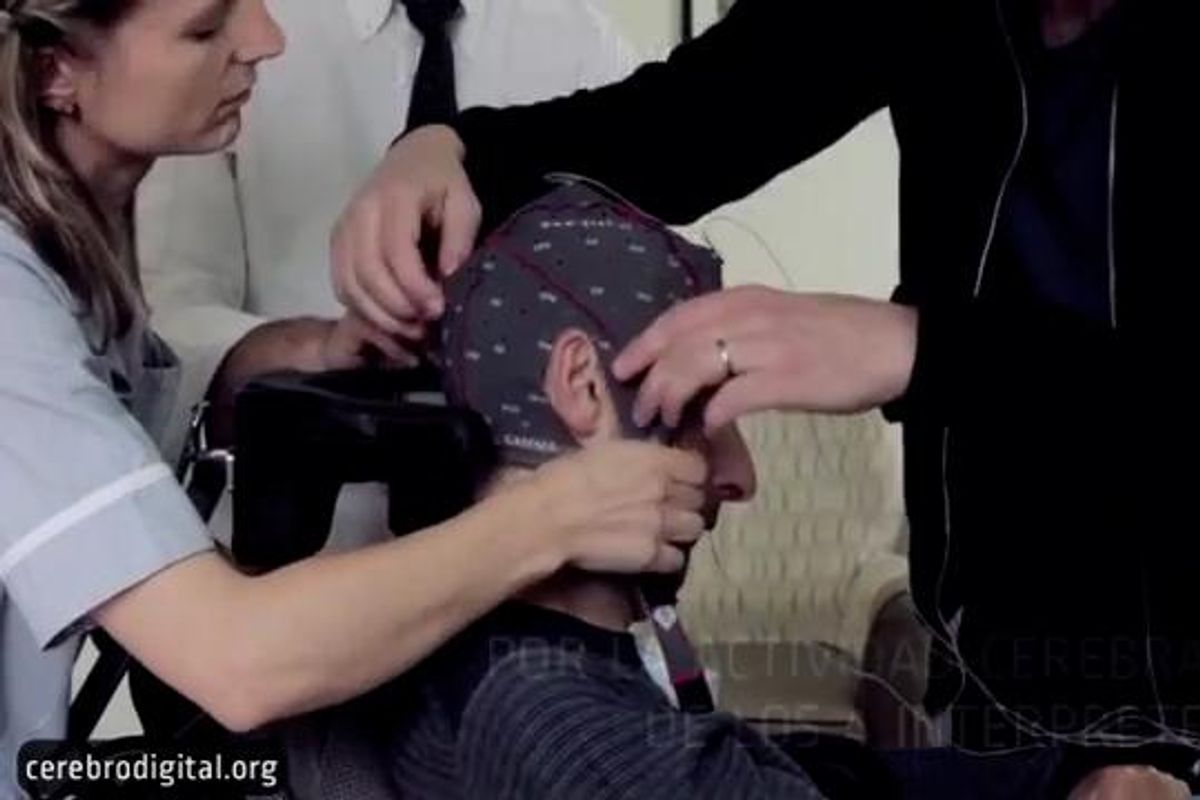Paralyzed musicians create beautiful sounds once again—using nothing but their brainwaves
The talent is still in their minds.

A string quartet that needs no instruments
Imagine seeing a string quartet play beautiful music.
Strings are pretty much my favorite kind of instrument; it's hard for me to listen to a cello or violin and not feel something. And when you get four musicians all playing together? Beautiful.
In 2015, Plymouth University's Interdisciplinary Centre for Computer Music Research and the Royal Hospital for Neuro-disability in London teamed up to create a spectacular string quartet.
But this wasn't your typical performance.
The musicians in this quartet all had severe motor impairments, which can affect a person's ability to move.
Motor impairments can be caused by a number of different things, such as a motor neuron disease like amyotrophic lateral sclerosis (known as ALS or Lou Gehrig's disease). In severe cases, a person may not be able to move or speak at all.
For musicians like these folks, their condition would normally present a considerable barrier to being able to play music like they once did. But in this case, researchers and doctors found a way to let them play anyway.
The thought was this: If the musicians still have musical talent but simply can't do the physical motions, we'll just make it so they don't need to do any physical motions.

Researchers place device on the head of musician.
Image pulled from YouTube video
First, researchers put stretchy, cap-like devices that can read brainwaves on the musician's heads.
Then, during the performance, a computer screen presented the four musicians with selections of short different musical phrases.
The musicians could choose what phrase they wanted by simply looking at it. The caps then picked up these brainwaves and sent the information to four other, nearby musicians who played the music for them (so, technically, maybe this would be an octet).
The end result was brilliant — four motor-impaired musicians, picking and playing in real-time to create beautiful music, all with their brainwaves.
One of their performances was captured in this short, nine-minute documentary by Tim Grabham and professor Eduardo Reck Miranda, who spearheaded the project.
Check out their brilliant performance here:
Brain-computer interfaces have gotten us this far and are taking us further still.
We've already seen brain-computer interfaces that can help us control prosthetic arms with thoughts and restore senses of hearing and touch to folks without them.
There's a lot more work to be done in these fields, of course, but one day soon, we might be hearing, seeing, and visiting a lot more performances and projects like this.
This article originally appeared on 10.25.16

